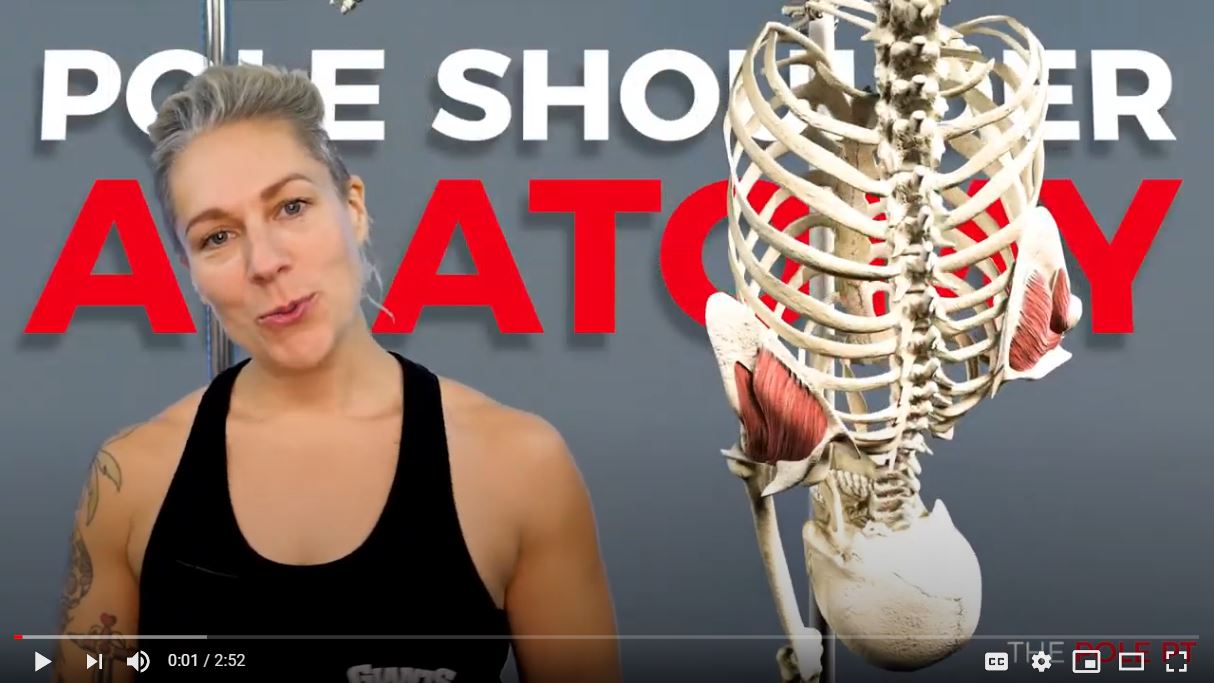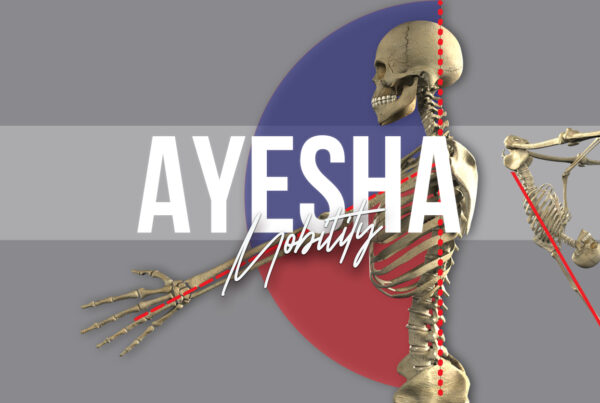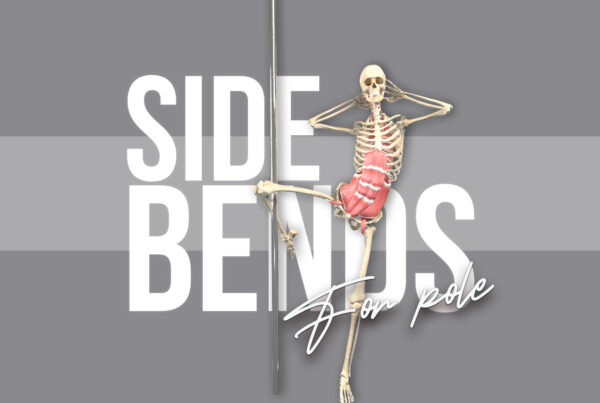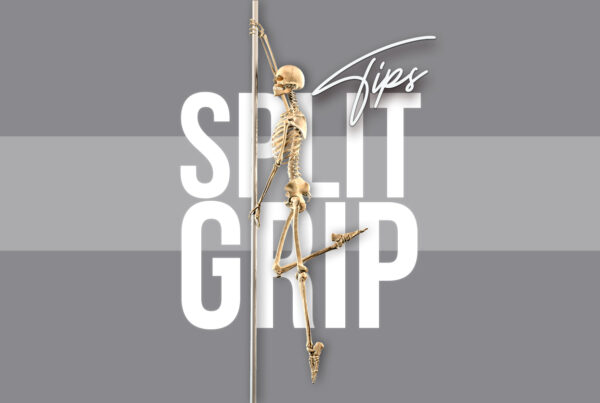We place a HUGE demand on our shoulders when we pole. Not only do we need ninja-level shoulder mobility to make jaw-dropping shapes around the pole, but we also need our shoulders to be hella strong in those end range positions, too.
In this 3-part blog/video series, we’ll look at one aspect of shoulder movement that is particularly important for pole dancers: shoulder flexion. More specifically – overhead pushing and pulling.
First, we’ll take a look at shoulder mechanics in an overhead position. Then we’ll see what this looks like ON the pole. Finally, we’ll look at ways we can train our shoulders to encourage optimal shoulder mechanics.
You betcha, we’ll be considering that ‘down and back’ shoulder engagement cue along the way.
Are ya with me? Then let’s do this thang…
If you’d rather watch than read, you can watch the video of this entire blog post below, complete with animated 3d pole anatomy awesomeness...
What does ‘good’ shoulder mechanics look like with our arm overhead?
When we raise our arm fully overhead, we want our scapula (our shoulder blade), to upwardly rotate about 60 degrees.
We also want some posterior tilt of the shoulder blade (about 20 degrees), for the shoulder blade to stay hugged to our ribcage and for the inferior angle (the bottom edge) of the shoulder blade to wrap around to about the midline of our body.
Finally, we also want to create some external rotation of the arm.

These 4 things, combined together, allow us to reach our end range overhead position and help to create optimal space within the shoulder joint.
Muscles used in overhead shoulder movement
The primary muscles we’re using here are: the trapezius – particularly the lower traps for the upward rotation, along with the serratus anterior which assists with that rotation as well as keeping the scapula hugged on our rib cage and wrapping around the body.
The humeral external rotation is stabilised by our rotator cuff.
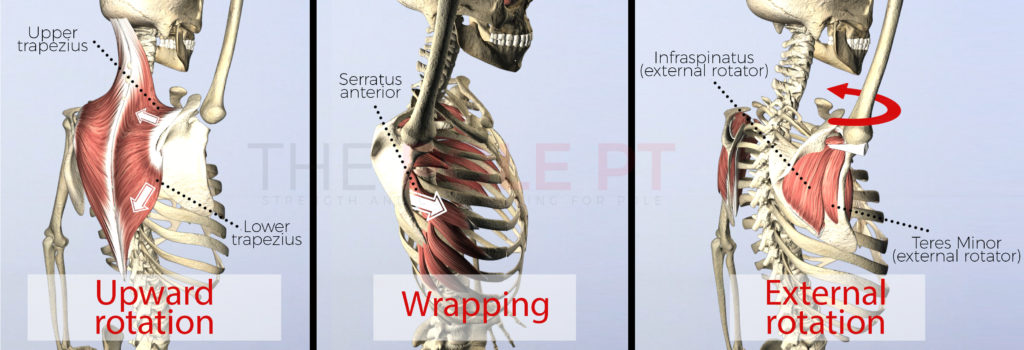
How does this overhead shoulder mechanics look and feel when we’re on the pole?
This all depends which way around we are! When we’re upside down on the pole – like in an Ayesha – our overhead arm is being used to PUSH. Gravity is pushing our body DOWN, so to counteract this, we need to actively PUSH to create that upward scapula rotation.
Cues that we often use in handstands like ‘shrugging the shoulders’ and ‘closing the gap between our shoulder and our arm’ are to help encourage that scapula upward rotation.
Additional cues like ‘screwing the hands into the floor’ or ‘pointing the elbows forwards’, are helping us to create that external rotation of the arm. These handstand cues apply in exactly the same way to the bottom arm in our Ayesha.
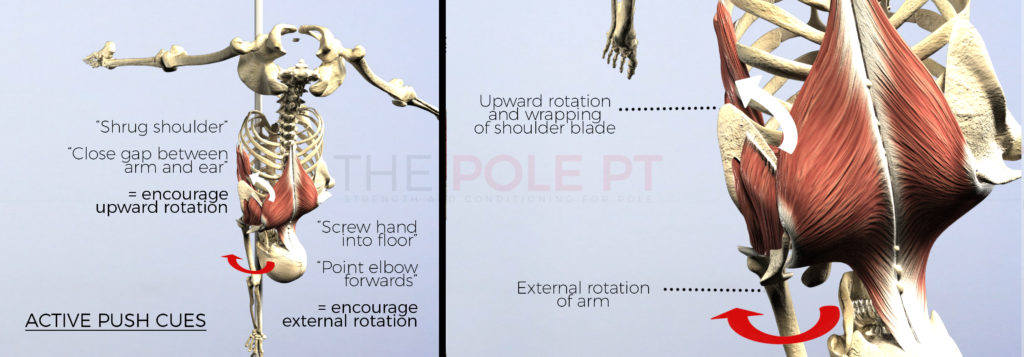
I know what you’re thinking… “how does this all work when we’re ‘right way around’ and gravity is pulling us in the opposite direction – like in a pole spin or climb?” Well, stay tuned my friends! We’ll be covering all of this in the next video! UPDATE: The next video is now available here!
Until then!
If you wanna geek out more with me about all things pole biomechanics, check out my book – Pole Anatomy – which breaks down the biomechanics of over 60 different pole moves so you can troubleshoot all your favourite tricks! Available now in paper copy or immediate electronic download!
I’d also like to give a shout out to The Circus Doc – Dr Emily Scherb! Emily’s courses on hanging in aerial arts have really helped to solidify my own understanding of how this all works. If you’re a body nerd like me, you’ll love The Circus Doc anatomy education courses, too! I can’t recommend them enough – go check ‘em out here!
*Just so you know, I earn a commission if you use this link, but I’d never recommend products to you that I don’t use and love myself! Now go get your nerd-on!
Thanks for reading/watching! See you next time!


